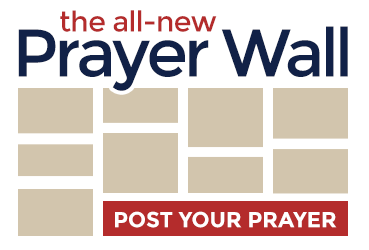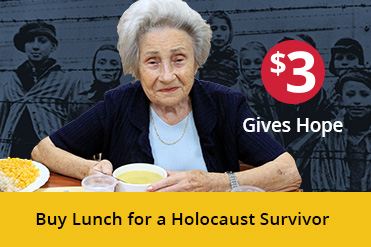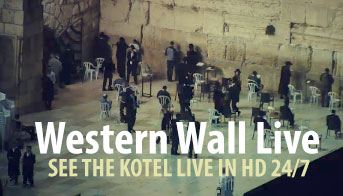“A Festival to the Lord”
This is how you are to eat it: with your cloak tucked into your belt, your sandals on your feet and your staff in your hand. Eat it in haste; it is the Lord’s Passover. On that same night I will pass through Egypt and strike down every firstborn of both people and animals, and I will bring judgment on all the gods of Egypt. I am the Lord. The blood will be a sign for you on the houses where you are, and when I see the blood, I will pass over you. No destructive plague will touch you when I strike Egypt. This is a day you are to commemorate; for the generations to come you shall celebrate it as a festival to the Lord—a lasting ordinance.” – Exodus 12:11-14
Exodus, the second book of the Pentateuch, tells the story of deliverance from bondage and of restoration—the establishing of a special relationship between Jehovah and the children of Israel and the first Passover. It is the story of Moses and his birth, life, and sudden departure from Egypt after murdering an Egyptian overseer (see Exodus 2:11–12).
Moses fled to the desert of Midian where God hardened him to desert life in the place he would spend the second 40 years of his existence. The adopted son of Pharaoh’s daughter learned meekness and humility and, at the same time, grew physically stronger for the task that, unbeknownst to him, lay ahead. At the end of 40 years on the backside of the desert, Moses was charged by Yahweh with storming into the throne room of Pharaoh, the most powerful man in the vast region, and demanding that his Israelite bond slaves be allowed to pack up and leave Goshen, the area to which they had been assigned.
As he returned to Egypt, Moses encountered Aaron, his older brother, in the desert. The two men made their way to the palace to challenge Pharaoh. With the ruler’s refusal to let the Israelites go, God began to visit ten plagues on the land. Rather than persuade the ruler, it achieved the opposite effect, and the burdens that had been placed on the children of Jacob were intensified. The last plague, the death of all of Egypt’s firstborn, was the final straw for the rebellious Pharaoh.
“Thus says the Lord: ‘About midnight I will go out into the midst of Egypt; and all the firstborn in the land of Egypt shall die, from the firstborn of Pharaoh who sits on his throne, even to the firstborn of the female servant who is behind the handmill, and all the firstborn of the animals. Then there shall be a great cry throughout all the land of Egypt, such as was not like it before, nor shall be like it again. But against none of the children of Israel shall a dog move its tongue, against man or beast, that you may know that the Lord does make a difference between the Egyptians and Israel.’ And all these your servants shall come down to me and bow down to me, saying, ‘Get out, and all the people who follow you!’ After that I will go out.” Then he went out from Pharaoh in great anger (Exodus 11:4-8).
Moses was vitally aware of what was about to befall the Egyptian people. Remember, as a baby he was saved by Pharaoh’s daughter because of an edict that demanded the deaths of all babies born to the children of Israel. Because of that action and the king’s refusal to free God’s people, a dire penalty would be exacted—not only on Pharaoh’s household but also on each family in the land of Egypt. Harsh, yes, but Pharaoh had been given numerous opportunities to heed the warning.
God did not send His people out of Egypt empty-handed. He repaid their decades of unpaid labor on the night of the Passover. Years of deprivation and disfavor culminated in one night of provision and preferential treatment. Jacob’s descendants were set free bearing the blessings of Jehovah as they hurriedly followed Moses to the Red Sea. Psalm 105:37 recounts, “He also brought them out with silver and gold, and there was none feeble among His tribes.”
In the midst of their captivity, Jehovah-Mephalti—the Lord my Deliverer—blessed His people with both health and wealth. Moses discovered that the favor of Jehovah God opens doors that no man can shut! It provided material goods that would never have been offered to the suffering Israelites while in bondage to the Egyptians. Can you picture those who opened their doors to the knocks of their Hebrew neighbors? How they might have bowed and then hurried back inside to fulfill the requests of their hated, and now feared, enemies?
Was this abundance of wealth provided only to line the pockets of the Israelites—to pay them back for all the years of hard labor under the harsh reign of Pharaoh? No, it was also for a greater purpose: God would eventually ask that His people open their hearts and coffers to provide the materials needed to build and furnish the tabernacle. God had given Moses very specific instructions regarding the tenth and final plague that was to grip the land of Egypt.
With a lamb, God had provided a way of escape for His people—an exchange for the firstborn in each family. Obedience was all that was required for the death angel to pass over Israelite homes. Jehovah then instructed that as a reminder of His graciousness, the Israelites were to observe a memorial day annually and in perpetuity—Passover. God stated in precise detail how the event was to be observed:
- The lamb was to be selected and carefully tended until the appointed time.
- It was to be slaughtered and its blood collected in a basin. It was to be roasted and totally consumed—anything left over was to be burned with fire.
- Its blood was to be brushed on the lintel and doorposts of the home with a branch of hyssop. Can you picture the care that must have been taken by the head of the household to be sure the lintel and doorposts were painstakingly covered with the blood of the lamb?
- The unleavened bread is symbolic of the haste of the Israelites’ departure from Egypt—the lack of sufficient time for the dough to rise.
- The bitter herbs represent the harsh treatment received at the hands of their cruel Egyptian taskmasters. Might this also be symbolic of the bitter tears shed by the children of Israel during their captivity? Or the cries of the mothers as their children were born and then immediately murdered by the midwives? It might have been indicative of the groanings as backs were lashed by whips or bent beneath the heavy load laid upon the Israelites. Such deep and abiding bitterness was the result of 400 years of pain and agony for the children of Israel.
- The people were to be fully clothed while eating the meal. They needed to be ready for the trek before them…cloaks donned, sandals fastened, and staff in hand. God had already promised in Exodus 6:6-7, “Say therefore to the people of Israel, ‘I am the Lord, and I will bring you out from under the burdens of the Egyptians, and I will deliver you from slavery to them, and I will redeem you with an outstretched arm and with great acts of judgment. I will take you to be my people, and I will be your God, and you shall know that I am the Lord your God, who has brought you out from under the burdens of the Egyptians.” God always keeps His promises!
THE SEDER CEREMONY
Today, as the Jewish people prepare for the feast, every vestige of yeast is removed from the home. In the days before the Passover observance, Jewish dwellings must be cleansed of anything containing chametz or leaven. Not only is it symbolic of the speed with which the Israelites were chased out of Egypt, Unger’s Bible Dictionary says that it is a “symbolic way of removing the ‘puffiness’ (arrogance, pride) from our souls.”
This picture of puffiness might also be labeled “self-righteousness.” The Message has an excellent interpretation of 1 Corinthians 5:6–8: “Your flip and callous arrogance in these things bothers me. You pass it off as a small thing, but it’s anything but that. Yeast, too, is a ‘small thing,’ but it works its way through a whole batch of bread dough pretty fast. So get rid of this ‘yeast.’”
Our true identity is flat and plain, not puffed up with the wrong kind of ingredient. The Messiah, our Passover Lamb, has already been sacrificed for the Passover meal, and we are the Unraised Bread part of the feast. So let’s live out our part in the feast—not as raised bread, swollen with the yeast of evil, but as flat bread…simple, genuine, unpretentious.
When leaven is added to flour, a chemical reaction causes the bread to increase in volume. Could it be that Jehovah was presenting yet another picture with the unleavened bread? God wanted His people to understand that He alone was the Redeemer, and there was no cause for them to be “puffed up.” He was the miracle maker, the rescuer of His people from the bondage of Pharaoh. There was no place in His plan for haughtiness or vanity, just a total reliance on Jehovah-Mephalti—the Lord my Deliverer.
The grains that must be swept from the home are wheat, rye, barley, oats, and spelt, a type of hulled wheat. Some Orthodox Jews also include rice, corn, peanuts, and legumes.
These items are not to be eaten or even possessed by the homeowner during Passover. The housecleaning undertaken during the pre-Pesach days is a massive assignment. Every crumb, every speck, and every iota of anything that contains leaven is to be scrubbed away. A few pieces of bread are left behind for the children to discover. These are burned outside the home to rid it of the symbol of sin that pervades daily life. Now the home is ready for the observance.
The Passover Seder, or ceremonial dinner to celebrate the exodus from Egypt, is to be practiced by Jews as an observance—a reminder—of Jehovah’s mercy, grace, and deliverance centuries before in Egypt. Individuals seated at the table are to see themselves as being the recipient of God’s deliverance and His promises recorded in Exodus 6:6–8: “Therefore say to the children of Israel: ‘I am the Lord; I will bring you out from under the burdens of the Egyptians, I will rescue you from their bondage, and I will redeem you with an outstretched arm and with great judgments. [The first three promises speak of redemption. The next three promises speak of relationship.] I will take you as My people, and I will be your God. Then you shall know that I am the Lord your God who brings you out from under the burdens of the Egyptians. [The last two promises speak of provision.] And I will bring you into the land which I swore to give to Abraham, Isaac, and Jacob; and I will give it to you as a heritage: I am the Lord.’”
As family members gather around the table to celebrate the Seder, the woman of the home lights candles to mark the beginning of the hallowed event. A Seder plate has been readied for the ceremony. It contains the following:
- Karpas from the Greek means “fresh vegetable.” It may be a boiled potato, parsley, or celery.
- The roasted shank bone of a lamb, a reminder of the Paschal lamb. Paschal means “He [God] skipped over” the houses of the children of Israel.
- Beitzah, or a hard-boiled egg. The egg is symbolic of mourning and is a reminder of the loss of Solomon’s and Herod’s temples in Jewish history.
- Charoset, a paste made of apples, nuts, wine, and spices. It comes from the Hebrew word cheres, or clay. It is representative of the mortar for buildings that the Egyptian overseers compelled the Hebrews to craft.
- Maror, or bitter herbs. This is a reminder of the brutal slavery the Israelites endured under Pharaoh.
- In some homes, a small bowl of salt water is placed on the plate as a reminder of the tears shed by the Jews and of the Red Sea through which God led the Israelites.
After the last candle has been lighted, the person seated at the head of the table raises the first of four cups of wine—this one representing sanctification—and blesses it before partaking. The guests seated at the table recline, or lean to the left, to signify freedom. (In ancient times, only those people who enjoyed freedom reclined as they partook of a meal.) The leader of the Seder ceremonially washes his hands and then passes a vessel containing salted water around the table. The salt is indicative of the cries of the children of Israel while in captivity. Each person then dips a piece of parsley or lettuce, signifying a new beginning, into the water.
Three matzot are placed into a special bag designed with three separate compartments. (In the matzah prepared today, even centuries after the death of and resurrection of Christ, this symbolism—the piercings and stripes—remain as the picture of Jehovah’s perfect plan of salvation.) One matzah is broken, and half is wrapped in linen and hidden away. A whole matzah is placed in the first and second compartments, and in the third, the Afikomen, or part of the broken matzah. It is eaten at the conclusion of the meal as dessert.
The second cup of wine—representative of the plagues—is raised and blessed but not drunk at that moment. A child is selected to ask the age-old question with answers in four parts: “Why is this night different from all other nights?”
- On all other nights, we may eat chametz and matzah, but on this night only matzah.
- On all other nights, we eat any vegetables, but on this night, we eat maror [bitter herbs].
- On all other nights, we do not dip even once, but on this night twice.
- On all other nights, we eat either sitting or reclining, but on this night, we all recline.
The meal begins with a hard-boiled egg. The story is told of a rabbi who was asked about the inclusion of an egg: “Because eggs symbolize the Jew,” the rabbi answered. “The more an egg is burned or boiled, the harder it gets.”
At the end of the meal, the Afikomen is removed from the pouch and consumed. It is symbolic of the Pascal Lamb. No other food is eaten for the remainder of the night. The third cup of wine—the cup of redemption—is then drunk. Those at the table sing the second part of the Hallel (a song of praise)—Psalms 115–118—after which the fourth cup of wine, the cup of praise, is consumed. It signifies the end of the Seder, after which point some families add, “Le-shanah ha-ba’ah bi-Yerushalayim,” or “Next year in Jerusalem.”
This phrase is also infused with hope for the coming of the Messiah. Author Sam Nadler wrote: “This cup calls us to praise God as we remember all that He has done for us. In remembering, let us also proclaim and rejoice in the true meaning of Passover. The head of the house sits opposite an empty seat traditionally left for Elijah the Prophet. Traditionally, Elijah is expected to arrive at Passover preceding and proclaiming the Coming One, that is, the Messiah Himself.
This tradition is taken from the book of Malachi.
In Malachi 3:1, we read, ‘Behold, I send My messenger, and he will prepare the way before Me. And the Lord, whom you seek, will suddenly come to His temple, even the Messenger of the covenant, in whom you delight. Behold, He is coming’.”
Hebrew scholar Gilad Barach also offered this insight into this cry of hope: “Although Jews pray each day for their immediate redemption, ‘Next year in Jerusalem’ signifies something more—their longing for the return of the holiday sacrifices. Yom Kippur and Passover are unique in the Jewish calendar because, more than any other holiday, their fundamental identities are inherently and integrally bound to the Temple service . . . . Though not despondent as we conclude this festive night, we admit that the highlight of the Seder night is missing in the Temple’s absence . . . . Next year, we will observe the day properly, in a rebuilt Jerusalem, with a rebuilt Temple and a reenacted sacrificial service.”
It is impossible to separate Judaism and Christianity. Judaism is the seed that falls onto the ground from which a tree grows. From the seed of Abraham and David came the Messiah, the One “sent” from the Father. Jesus was born to Mary, a Jewess from Nazareth. He closely identified with God’s Chosen People. He studied with them, walked among them, and ministered to His kinsmen, all the while preaching a universal message of His Father’s love and grace.
Thirty-three years after His miraculous birth, 1,500 years after the celebration of the very first Passover, Jesus had His disciples prepare a place to celebrate the symbolic meal on the night before His crucifixion. In Luke 22:15–16, we read: “Then [Jesus] said to them, ‘With fervent desire I have desired to eat this Passover with you before I suffer; for I say to you, I will no longer eat of it until it is fulfilled in the kingdom of God.’” This Passover meal was the fulcrum point of His earthly ministry, His last before being betrayed into the hands of the Sanhedrin and, ultimately, the Romans. Each Passover is a reminder to us that the Lamb of God was slain for the sins of the world, and His blood is our salvation.
Show Your Support By Giving Now








